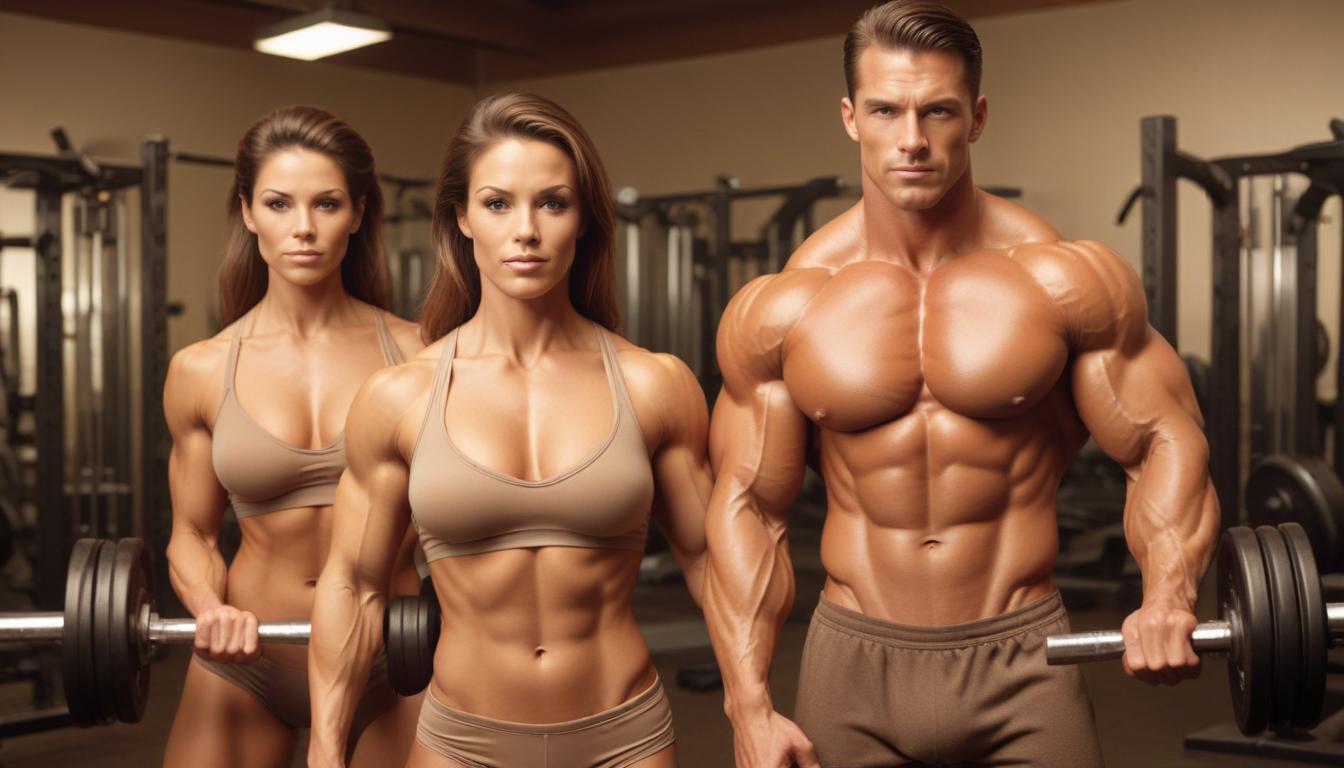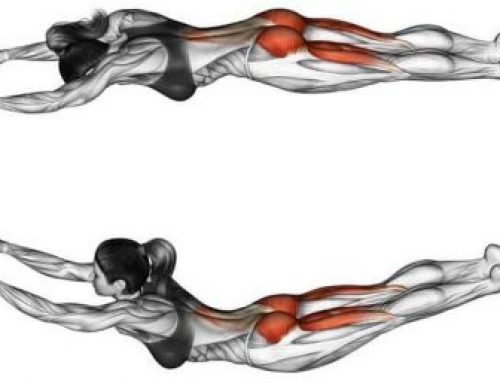
Mastering Bodyweight Workouts: Effective Exercises for Muscle Building at Home
Introduction to Bodyweight Workouts
Bodyweight workouts have garnered significant attention in recent years due to their accessibility and effectiveness. These exercises utilize an individual’s own body weight to provide resistance against gravity, making them an excellent alternative to traditional weightlifting methods. One of the primary benefits of bodyweight workouts is their ability to build muscle without the need for any specialized equipment, allowing individuals to perform them virtually anywhere — be it at home, in a park, or even in a hotel room while traveling.
Beyond convenience, bodyweight exercises offer multiple advantages, particularly in terms of functional strength and flexibility. Movements such as push-ups, pull-ups, squats, and lunges engage multiple muscle groups, fostering coordination and balance. This holistic approach ensures that the body develops in a balanced manner, which can enhance overall fitness and reduce the risk of injury. Moreover, the adaptability of bodyweight workouts means they can be easily modified to suit varying fitness levels, from beginners to advanced athletes.
Another compelling aspect of bodyweight workouts is their efficiency. With minimal setup required, these exercises can be seamlessly integrated into daily routines, making it easier to maintain consistency and adhere to fitness goals. Furthermore, the versatility of bodyweight workouts ensures that they can be tailored to target specific muscle groups or provide a full-body workout, depending on individual preferences and objectives.
The misconception that significant muscle gain is achievable only through lifting heavy weights is gradually being dispelled. Research has shown that bodyweight exercises can stimulate muscle growth effectively when performed with proper technique and intensity. By progressively challenging the muscles through increased repetitions, variations, and incorporating elements like tempo changes, individuals can achieve substantial strength gains and muscle hypertrophy.
In sum, bodyweight workouts present a practical, versatile, and effective means of building muscle and enhancing overall fitness. Their inherent flexibility and accessibility make them a valuable addition to any exercise regimen, ensuring that individuals can stay fit and healthy regardless of their circumstances or environment.
The Science Behind Muscle Building with Bodyweight Exercises
Understanding the science behind muscle building with bodyweight exercises is crucial for designing effective workout routines. Central to this process is muscle hypertrophy, which refers to the increase in muscle size due to resistance training. During bodyweight exercises, muscles undergo microscopic tears. The body repairs these tears, making the muscles larger and stronger.
Progressive overload is another key concept in muscle building. It involves gradually increasing the resistance or intensity of workouts to continue challenging the muscles. While traditional weightlifting allows for easy quantification of load, bodyweight exercises require creativity to achieve progressive overload. This can be done by altering the number of repetitions, changing the exercise angle, or incorporating advanced variations of standard movements.
Proper form and technique are essential in maximizing the benefits of bodyweight exercises and minimizing the risk of injury. Performing exercises with correct posture ensures that the targeted muscle groups are effectively engaged, leading to optimal muscle activation and growth. For instance, during push-ups, maintaining a straight body line and lowering the chest close to the ground ensures the pectoral muscles are adequately stimulated.
Bodyweight exercises are versatile and can target different muscle groups efficiently. Movements such as push-ups, pull-ups, and squats are compound exercises that engage multiple muscle groups simultaneously. Push-ups predominantly work the chest, shoulders, and triceps, while pull-ups target the back, biceps, and forearms. Squats focus on the quadriceps, hamstrings, and glutes. Incorporating a variety of these exercises ensures a balanced and comprehensive muscle-building workout.
By understanding the underlying principles of muscle hypertrophy, progressive overload, and proper form, individuals can effectively utilize bodyweight exercises to build muscle and achieve their fitness goals.
Essential Bodyweight Exercises for Upper Body Strength
Building upper body strength can be effectively achieved through a variety of bodyweight exercises that require no equipment and can be performed at home. Below is a detailed guide on key exercises that target the upper body, including push-ups, pull-ups, and dips, along with their variations.
Push-Ups
Push-ups are a foundational bodyweight exercise that primarily target the chest, shoulders, and triceps. To perform a standard push-up, start in a plank position with your hands placed slightly wider than shoulder-width apart. Lower your body until your chest nearly touches the floor, keeping your elbows at a 45-degree angle. Push through your palms to return to the starting position. Common mistakes include flaring the elbows too wide and arching the lower back. To maximize effectiveness, engage your core and maintain a straight line from head to heels.
Pull-Ups
Pull-ups are excellent for developing the back, biceps, and forearms. Begin by gripping a pull-up bar with your hands slightly wider than shoulder-width apart, palms facing away. Engage your back and core, then pull yourself up until your chin is above the bar. Lower yourself back to the starting position with control. Avoid swinging your legs or using momentum. To enhance this exercise, focus on squeezing your shoulder blades together at the top of the movement.
Dips
Dips target the triceps, chest, and shoulders. Use parallel bars or the edge of a sturdy chair. Position your hands on the bars or chair edge, arms straight and body elevated. Lower your body by bending your elbows to a 90-degree angle, then push back up to the starting position. Common mistakes include leaning too far forward and flaring the elbows. To increase difficulty, try performing dips with your feet elevated.
Variations
To further challenge and develop upper body strength, try variations of these exercises. For push-ups, consider diamond push-ups to target the triceps more intensely or decline push-ups to increase shoulder activation. For pull-ups, try changing your grip to a narrower or wider position, or attempt chin-ups with palms facing towards you to emphasize the biceps. For dips, performing them on rings can add an element of instability, increasing the demand on stabilizing muscles.
Core Strengthening Bodyweight Exercises
Core strengthening bodyweight exercises are fundamental components of any fitness regimen, as a strong core is essential for overall stability and functional strength. The core muscles, encompassing the abdominals, obliques, and lower back, provide a solid foundation for nearly all physical activities, from sports to everyday movements. Effective core exercises not only enhance performance but also reduce the risk of injuries.
Among the quintessential exercises for core strengthening, planks stand out due to their simplicity and effectiveness. Planks engage multiple muscle groups simultaneously, providing a comprehensive workout for the core. Traditional planks can be modified into side planks, which target the oblique muscles more intensely. For those seeking additional challenges, incorporating movements such as plank shoulder taps or plank jacks can increase the exercise’s intensity and effectiveness.
Leg raises are another powerful exercise for core enhancement. This movement primarily targets the lower abdominals and can be performed in various ways to suit different fitness levels. Beginners might start with bent-knee raises, while more advanced individuals can progress to straight-leg raises or even hanging leg raises if equipment is available. Consistent practice of leg raises not only strengthens the abdominal muscles but also enhances lower body control and flexibility.
Mountain climbers combine core strengthening with cardiovascular conditioning. This dynamic exercise involves a high level of core engagement as you bring your knees towards your chest in a plank position. The intensity can be adjusted by varying the speed of the movement. To further challenge the core and increase the workout’s complexity, try cross-body mountain climbers or elevated mountain climbers, using a bench or step to elevate the hands.
Progressions and variations are critical to maintaining the effectiveness of core workouts. As strength improves, integrating new elements such as stability balls or resistance bands can provide fresh challenges. Consistently varying the exercises prevents plateaus and ensures continual development of core strength. By incorporating these core-focused bodyweight exercises into your routine, you can build a robust foundation that supports overall fitness and enhances daily functional performance.
Lower Body Workouts with Bodyweight Exercises
Bodyweight exercises offer an excellent means to build lower body strength and muscle without the need for gym equipment. Among the most effective exercises are squats, lunges, and glute bridges. These exercises target major muscle groups, including the quadriceps, hamstrings, and glutes, promoting functional strength and stability.
Squats: Squats are a fundamental bodyweight exercise that primarily engages the quadriceps, hamstrings, and glutes. To perform a squat, stand with feet shoulder-width apart, toes slightly turned out. Lower your body by bending your knees and hips, ensuring that your back remains straight and your knees do not extend past your toes. Descend until your thighs are parallel to the floor, then return to the starting position. Squats can be modified by adjusting the depth or adding a jump at the top for an increased challenge.
Lunges: Lunges are highly effective for targeting the quadriceps, hamstrings, and glutes while also improving balance and coordination. Begin by standing upright, then step forward with one leg, lowering your body until both knees are at a 90-degree angle. Ensure the front knee is directly above the ankle and the back knee hovers just above the ground. Push through the heel of the front foot to return to the starting position and repeat on the other leg. Variations include reverse lunges, walking lunges, and side lunges, each offering a different focus and level of difficulty.
Glute Bridges: Glute bridges are excellent for targeting the glutes and hamstrings while also engaging the core. Lie on your back with knees bent and feet flat on the floor, hip-width apart. Push through your heels to lift your hips off the ground, squeezing your glutes at the top of the movement. Hold briefly before lowering back down. This exercise can be intensified by performing single-leg glute bridges or adding an isometric hold at the top of the movement.
These bodyweight exercises are not only effective for muscle building but also adaptable to various fitness levels. Beginners can start with fewer repetitions and work their way up, while advanced individuals can incorporate variations and increased intensity to continue progressing. By incorporating these exercises into your routine, you can effectively strengthen and develop your lower body at home.
Creating Effective Home Workout Routines
Designing a home workout routine with bodyweight exercises involves strategic planning and thoughtful consideration of various factors. One of the key elements in creating an effective workout plan is balancing different muscle groups to ensure a comprehensive and holistic approach to fitness. This balance helps in preventing overuse injuries and promotes uniform muscle development.
Start by setting clear, achievable goals. These goals can range from improving overall strength and flexibility to targeting specific muscle groups. Establishing what you want to accomplish will guide your exercise selection and help you stay motivated. Once your goals are defined, create a schedule that aligns with your daily routine, ensuring consistency and commitment.
For beginners, a sample routine could include exercises such as push-ups, squats, and planks. A three-day split might look like this:
- Day 1: Push-ups, squats, and lunges
- Day 2: Planks, mountain climbers, and leg raises
- Day 3: Rest or light stretching
Intermediate individuals can incorporate more challenging moves, such as tricep dips, Bulgarian split squats, and side planks. An intermediate routine might include:
- Day 1: Tricep dips, Bulgarian split squats, and side planks
- Day 2: Burpees, step-ups, and V-ups
- Day 3: Rest or active recovery
For advanced fitness enthusiasts, high-intensity exercises such as plyometric push-ups, pistol squats, and dragon flags can be integrated into their routines. An advanced schedule could be:
- Day 1: Plyometric push-ups, pistol squats, and dragon flags
- Day 2: Handstand push-ups, jump squats, and hanging leg raises
- Day 3: Rest or active recovery
By carefully planning and balancing your bodyweight workout routines, you can effectively build muscle and improve your overall fitness from the comfort of your home. Remember, consistency is key, and regularly adjusting your routines to increase intensity will help you continue to see progress.
Progressions for Increasing Difficulty
Progressing in bodyweight workouts is essential for continuous muscle growth and avoiding plateaus. By gradually increasing the difficulty of exercises, you ensure that your muscles are consistently challenged, promoting strength and hypertrophy. There are several effective techniques to increase the difficulty of bodyweight exercises: increasing repetitions, adding holds, changing leverage, and incorporating more complex movements.
Increasing repetitions is the simplest method. As your strength and endurance improve, you can gradually increase the number of repetitions per set. For instance, if you started with 10 push-ups, aim for 15, then 20, and so on. This gradual increase ensures your muscles are continually challenged.
Adding holds, or isometric holds, is another way to intensify bodyweight exercises. This technique involves pausing at the most challenging part of the movement. For example, in a push-up, you might hold the lowered position for three to five seconds before pushing back up. This added time under tension forces your muscles to work harder.
Changing leverage can significantly alter the intensity of an exercise. By adjusting your body position, you can make an exercise more challenging. For example, elevating your feet during push-ups shifts more weight onto your upper body, increasing the exercise’s difficulty. Similarly, performing squats with your heels elevated can increase the demand on your quadriceps.
Incorporating more complex movements is another effective progression technique. Complex movements engage multiple muscle groups and require greater coordination and strength. For instance, progressing from a standard push-up to a one-arm push-up or from a regular squat to a pistol squat can provide a substantial challenge. These advanced variations necessitate increased strength, balance, and stability, promoting overall muscular development.
By systematically applying these techniques—incrementing repetitions, adding holds, adjusting leverage, and incorporating complex movements—you can ensure continuous progression in your bodyweight workouts. This strategic approach keeps your muscles guessing and growing, allowing you to build strength and muscle effectively from the comfort of your home.
Tracking Progress and Staying Motivated
Effective progress tracking and sustained motivation are crucial components in mastering bodyweight workouts at home. Utilizing fitness journals, apps, and other monitoring tools can provide valuable insights into your improvements and help maintain your momentum over time. By documenting your workouts, you can identify patterns, track gains, and adjust your routines to maximize muscle building.
A fitness journal is a practical tool for recording details such as exercise types, repetitions, sets, and rest periods. This written record enables you to reflect on past performances and set achievable targets. Fitness apps, on the other hand, offer a digital solution with additional features like video demonstrations, progress graphs, and personalized workout plans. Some popular apps include MyFitnessPal, JEFIT, and Strong. These applications can facilitate more accurate tracking and provide motivational boosts through reminders and progress notifications.
Maintaining motivation is often challenging, especially when working out at home. Setting realistic, incremental goals is essential for sustaining long-term motivation. Break down larger objectives into smaller, more manageable milestones, and celebrate each achievement. For instance, aim to increase your push-up count by five each week or reduce rest time between sets gradually. These small victories can significantly enhance your motivation and sense of accomplishment.
Overcoming common challenges, such as workout monotony and plateauing, requires strategic planning. Introducing variety into your routines by incorporating different exercises, changing workout sequences, or varying intensity levels can prevent boredom and stimulate muscle growth. Engaging in online fitness communities or finding a workout partner can also provide accountability and encouragement.
Additionally, regular self-assessment and flexibility are vital. Periodically reassess your goals and progress, and be prepared to adapt your workouts if necessary. Remember, consistency and persistence are key to mastering bodyweight exercises and achieving your muscle-building goals at home. With the right tools and mindset, you can track your progress effectively and stay motivated throughout your fitness journey.
About the author : Tricep
We valued your need and thought . Main aim is to keep you fit with our suggestion and help let have a lifestyle
Latest videos
The Vital Role of Exercise in Maintaining Our Health
Understanding Exercise and Its Impact on HealthExercise is a cornerstone of a healthy lifestyle, often regarded as a vital factor in promoting overall health and well-being. Engaging in regular physical activity not only enriches the [...]
The Role of Triceps in Bench Press: Maximize Your Gains
```html Understanding the Bench Press and Its Muscle Groups The bench press is a compound exercise, revered in the strength training community for its ability to enhance upper body power and muscle development. At its [...]
Join our mailing list today
Insider offers & flash sales in your inbox every week.
Curabitur non nulla sit amet nisl tempus convallis quis ac lectus dolor sit amet, consectetur adipiscing elit sed porttitor lectus.











